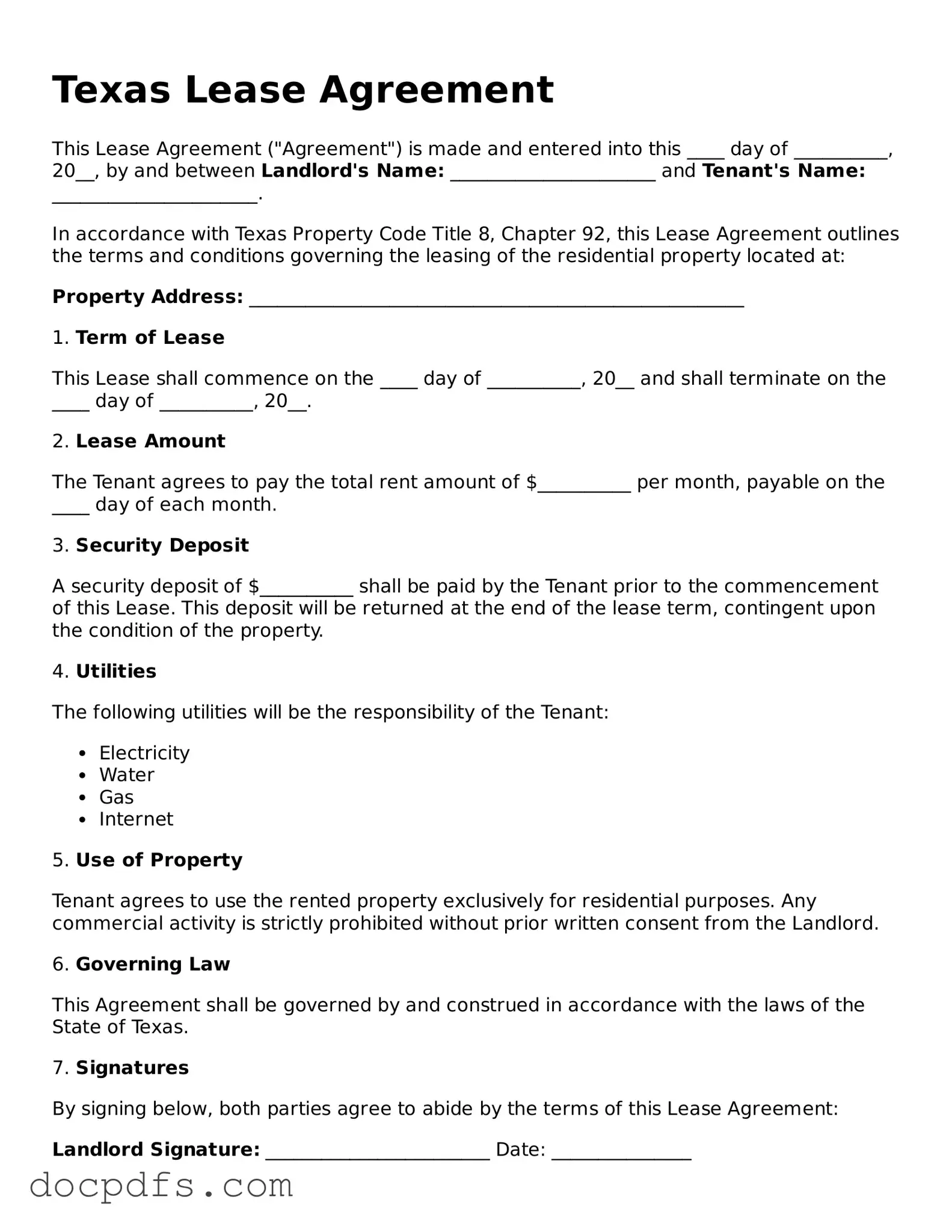What is a Texas Lease Agreement?
A Texas Lease Agreement is a legally binding document that outlines the terms and conditions under which a landlord rents property to a tenant in the state of Texas. This agreement typically includes details such as the duration of the lease, the amount of rent, security deposits, and responsibilities of both parties.
What are the key components of a Texas Lease Agreement?
Key components of a Texas Lease Agreement often include:
-
Parties Involved:
The names and addresses of both the landlord and tenant.
-
Property Description:
A clear description of the rental property, including the address.
-
Lease Term:
The duration of the lease, whether it is month-to-month or for a fixed term.
-
Rent Payment:
The amount of rent due, payment methods, and due dates.
-
Security Deposit:
The amount required, conditions for its return, and any deductions that may apply.
-
Maintenance Responsibilities:
Outlining who is responsible for repairs and upkeep of the property.
-
Termination Conditions:
The process for ending the lease and any notice requirements.
How is rent typically paid in a Texas Lease Agreement?
Rent is usually paid on a monthly basis, although some leases may specify different arrangements. The agreement should clearly state the due date, acceptable payment methods (such as check, online payment, or direct deposit), and any penalties for late payments. This clarity helps prevent misunderstandings between landlords and tenants.
What is a security deposit, and how is it handled?
A security deposit is a sum of money collected by the landlord at the beginning of the lease to cover potential damages or unpaid rent. In Texas, landlords can charge up to one month's rent as a security deposit. Upon termination of the lease, the landlord must return the deposit within 30 days, minus any lawful deductions. A detailed explanation of deductions should be provided to the tenant.
Can a Texas Lease Agreement be modified?
Yes, a Texas Lease Agreement can be modified, but any changes must be made in writing and signed by both the landlord and tenant. This ensures that both parties agree to the new terms and helps prevent disputes in the future. Verbal agreements may not hold up in court, so written documentation is crucial.
What happens if a tenant needs to break the lease early?
If a tenant needs to break the lease early, they should first review the lease agreement for any specific clauses regarding early termination. In many cases, tenants may be required to provide notice or pay a penalty. Open communication with the landlord can sometimes lead to a mutually agreeable solution, such as finding a replacement tenant.
Are there any specific laws that govern Texas Lease Agreements?
Yes, Texas has specific laws that govern residential leases, primarily found in the Texas Property Code. These laws address various aspects, such as security deposits, tenant rights, and landlord obligations. Understanding these laws can help both landlords and tenants navigate their responsibilities and rights more effectively.
What should tenants do if they believe their rights are being violated?
If tenants believe their rights are being violated, they should first document the issue and communicate with the landlord. If the problem persists, tenants can seek assistance from local tenant advocacy groups or legal aid organizations. In some cases, it may be necessary to file a complaint with the Texas Attorney General or pursue legal action in small claims court.
Is it necessary to have a written lease agreement in Texas?
While verbal agreements can be legally binding, having a written lease agreement is strongly recommended. A written document provides clear evidence of the terms agreed upon and can help prevent disputes. It also offers both parties a reference point for their rights and responsibilities throughout the lease term.
